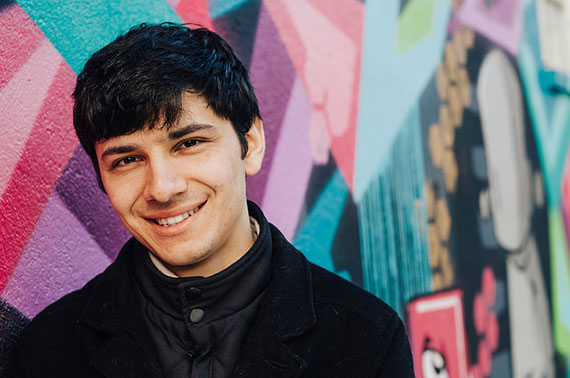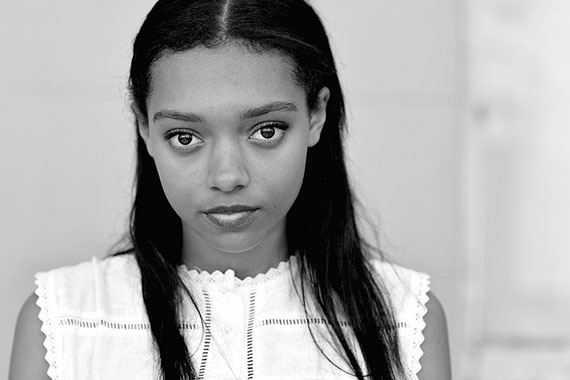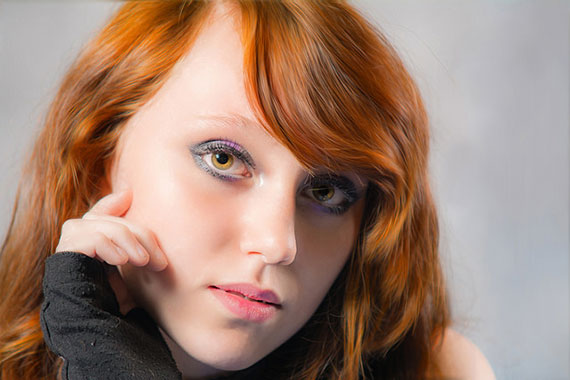Are you looking for portrait photography tips so that you can improve your picture taking skills?

Photo by Jen G
At first thought, portrait photography would seem easy, yet the results are often disappointing.
Many of our pictures often include people, and whether you are photographing a model, taking a family photo, or capturing some candid shots while on vacation, you have probably discovered that great photography is a little more than just pointing a camera and pushing a button.
In fact, a really good photo should convey the subject’s character and personality, and communicate something distinct or identifiable about who they are as a person. Following a few key tips will help you learn how to take great portraits so you will never be disappointed again.
1. Choose the appropriate setting
The first step in taking portraits is to find out what the subject or family wants.
What is the model’s personality or the attitude of the family? Are they outgoing, serious, or funny? What are they trying to create with the photo? What mood are they wanting to convey? Or, what are the reasons for having the photos taken?
When you answer these questions, you will be able to choose an appropriate setting accordingly. Settings can vary from a formal indoor environment, to a more casual outdoor location, a family home, a studio, or even a subject’s workplace.
Also, when considering backgrounds, remember that the focus should always be on the subject, so choose a setting that is passive or complements and enhances the theme and mood of the photograph.
2. Consider lighting
Lighting can change the mood and effect of any photograph, and when taking portraits, natural lighting is best, so whenever possible, take these pictures outdoors or by a window.
It is important to be aware of lighting and shadows as you want to flatter your subjects, not draw attention to wrinkles or imperfections. Also, keep in mind that flash lighting can cause red eye and may also produce boring, clinical photographs.

Photo by Peter Grifoni; ISO 100, f/2.8, 1/500-second exposure.
Rather than looking like the typical, uninteresting school pictures, you want your photos to be creative and intriguing so they capture people’s attention and express the subject’s personality. Experiment with lighting by trying some silhouetting, use soft lighting for a more romantic mood, or schedule a sunrise photo shoot.
3. Pose subjects well
When taking portraits, it is important to give your models clear instructions. Sometimes the best positioning may feel a little awkward or unnatural, so if you need your subject to tilt their head to the left or drop their shoulder down a little, you must communicate exactly what you want.
Positioning the head and body at different angles will give you some variety in your shots and make your photos more interesting. It is important that you make the subjects feel comfortable, so take a few minutes to get to know them and put them at ease.
If you can understand a little of their personality, you may get a better idea on how to pose them. Pay attention to expressions, body language, and other traits and try to pose the models so you can capture some of these identifiable features. Also, you should ask your clients what type of pictures they are hoping for because this may help you determine different poses that will add to the creativity and mood of the photos.
4. Use the right camera settings and lenses
For portraits, it is best to use an optical zoom and the widest possible aperture. By changing the shutter speeds and aperture values you can vary the images by having the entire frame in focus, making subjects appear sharper, or blurring backgrounds.

Photo by William Matthews
Use a tele lens to soften backgrounds, create distortions, or take pictures from a distance. Making the right equipment choices will help improve the quality and variety of your portraits.
5. Vary viewpoint or perspective
As a photographer you must learn how to think outside the box. With the resources available today, boring, posed photos will not make much of an impression. Creativity it the key! Most pictures are taken at eye level, but by changing the angle you can make your images much more powerful.
Take photos from above or below, have the subject lay on the floor, or climb a tree or ladder. If you are taking a group photo, vary the level or positions of the individuals, and experiment with framing by having subjects off to the side or on an angle rather than centered. Play with eye contact by having models look away from the camera or asking subjects to look at each other or objects within the photo. If the situation allows, have fun! You may just discover something both beautiful and unique that captures personality and displays quality.
6. Be prepared
One of the best tips to taking great portraits is to be prepared. Being professional, organized, and confident puts people at ease and will make the photo sessions run smoothly and efficiently.
Whether you are a professional photographer or an amateur just wanting to capture some memories of family vacations and special events, many of your photos will likely include people. By following these few portrait photography tips, you can learn to take great pictures that will be beautiful, natural, and studio quality.

Photo by Rihtor; ISO 100, f/5.0, 1/500-second exposure.
About the Author:
Mia Rose is a photographer and the creator of Basic-Photography-Tips.com and has been creating stunning photo art for the past ten years.
Like This Article?
Don't Miss The Next One!
Join over 100,000 photographers of all experience levels who receive our free photography tips and articles to stay current:






Very usefull article, what you you say about: “As a photographer you must learn how to think outside the box” so true!
Thank you,
Lisette
Good article! I’m gonna use some of the tricks
pose subjects well…. if only it could be explained in a paragraph!!
Sometimes using a wide aperture is not a good idea, depends on wether the background could countribute to the story or not.